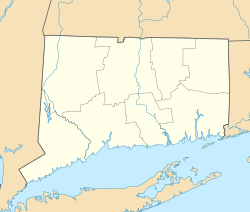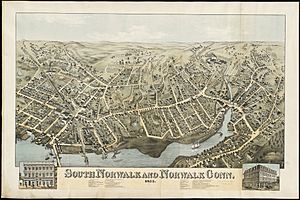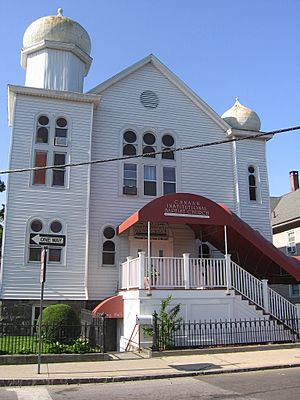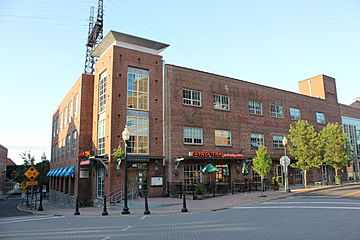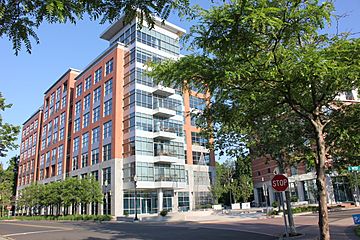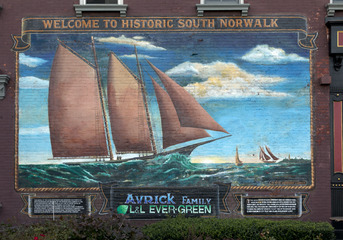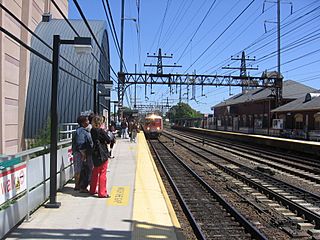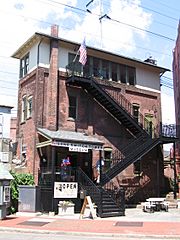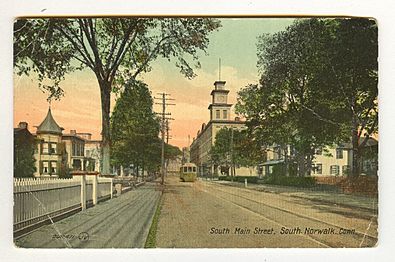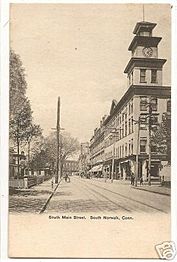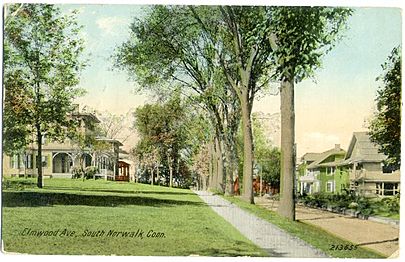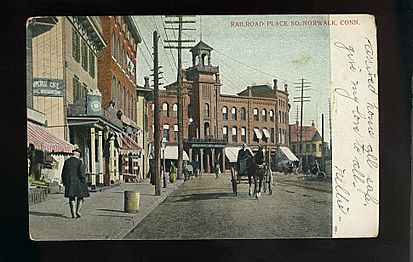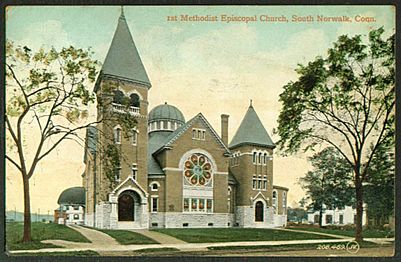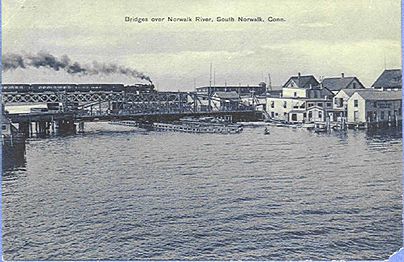South Norwalk, Connecticut facts for kids
Quick facts for kids
South Norwalk
|
|
|---|---|
|
Taxing District
|
|
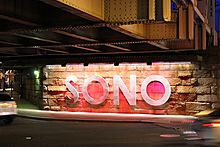
SoNo illuminated sign
|
|
| Country | |
| State | |
| County | Fairfield |
| City | Norwalk |
| Founded | August 18, 1870 |
| Incorporated with Norwalk | June 6, 1913 |
| ZIP code |
06854
|
| Area code(s) | Area codes 203 and 475 |
South Norwalk, often called SoNo, is a lively neighborhood in Norwalk, Connecticut. It's known as the city's Second Taxing District. This area started as a small settlement called Old Well. It officially became the city of South Norwalk on August 18, 1870. Later, on June 6, 1913, South Norwalk joined with the larger city of Norwalk.
In recent years, South Norwalk has changed a lot. Many new apartments have been built, especially near the South Norwalk station. These new homes are often more expensive than older ones. SoNo is also a very diverse place, with people from many different backgrounds living there.
The neighborhood is home to the yearly SoNo Arts Festival. This event shows off local artists, businesses, and musicians. Another big event, the Norwalk Oyster Festival, happens at Veteran's Memorial Park. This park is just across the Norwalk Harbor in East Norwalk.
Contents
A Look at SoNo's Past
The Old Well Story
South Norwalk grew up around a special well called the "Old Well." Sailing ships would stop here to fill their water casks. This well was used as early as 1738. An old document from that time mentions Washington Street as the "highway that leads to ye landing place called Ye Old Well."
The exact spot of the well isn't known today. But maps from the 1800s show it was east of Water Street. People think it was near Donovan’s Tavern, a place sailors often visited. The area around the well became a small settlement. It was involved in coastal trade, making goods, and building ships. Many farms with different crops were also here.
One old quote describes it: "Old Well was scarcely a village in those days, but rather a group of farms, and the well which gave the place its name was on Water street."
Becoming the City of South Norwalk
The area of Old Well officially became a city on August 18, 1870. It was named South Norwalk. Before that, in 1868, it was first made into a city. The Connecticut Legislature approved its charter on July 5, 1870. In 1873, the City of South Norwalk became part of the Town of Norwalk. However, it still kept its city status and managed its own resources.
Around this time, Norwalk and South Norwalk didn't always get along. Norwalk refused to share its water system with South Norwalk. This led to a rivalry between the two cities. They often competed to attract new businesses.
In the 1800s, factories started to grow in Connecticut and Norwalk. These factories made things like firearms, buttons, shoes, and hats. Workers came from places like Chesapeake, Maryland, to work as oystermen. Rich business owners lived on Golden Hill, which overlooked South Norwalk. Many immigrants also came to Norwalk. In the early 1900s, large groups of Hungarians, Eastern European Jews, and Italians moved here.
Horse-drawn trolleys started running in South Norwalk in the 1860s. These were later updated to electric trolleys in 1894. South Norwalk became a center for local industry. It had its own railroad station, the Norwalk Harbor, an electric trolley system, its own water company, and a good school system.
Joining Norwalk
Even with all its industry, South Norwalk faced pressure to merge with Norwalk. Both cities were sometimes too small on their own to attract big businesses. South Norwalk was hesitant because its industries were doing better than Norwalk's. In 1902, South Norwalk and East Norwalk even tried to leave the Town of Norwalk completely. South Norwalk's mayor, Mortimer M. Lee, pointed out that his city had "a large water system, a splendid electric light plant, a separate sewer system, a public library and a library building and schools second to none." In 1903, the Connecticut State Legislature tried to create an independent Town of South Norwalk. But the governor, Abiram Chamberlain, stopped it.
As a compromise, Norwalk allowed South Norwalk, East Norwalk, and Rowayton to join as taxing districts. This meant they could mostly keep their own local services while being part of Norwalk.
South Norwalk Today

In 1935, South Norwalk's trolley system was replaced by buses.
Starting in the 1950s, South Norwalk's industries began to decline. Many factories, including Norwalk's large hat industry, either closed or moved away from New England. This led to plans for urban renewal in the 1960s. Older buildings and factories on western Washington Street were torn down. New offices, a shopping center, and affordable housing were built. The Norwalk Redevelopment Agency wanted to do the same on eastern Washington Street in the 1970s. But local residents stopped them. They successfully got the buildings added to the National Register of Historic Places in 1977.
In 1988, the Maritime Aquarium opened in an old factory building. In the 21st century, South Norwalk has seen many new apartments built. Many of these are near the South Norwalk train station.
Where is SoNo?
South Norwalk is also known as the Norwalk Second Taxing District. It is bordered by Route 1 (also called Connecticut Avenue) to the north. To the east, you'll find the Norwalk Harbor and the Norwalk River. The southern border runs from Windsor Place to Neptune Avenue, next to the Norwalk River. The western border goes from Windsor Place up to Connecticut Avenue.
The SoNo Collection
The SoNo Collection is a very large shopping mall. It covers 700,000 square feet! It opened in October 2019 and is located next to Interstate 95 and Route 7. Brookfield Properties built it. It's the fourth mall in Fairfield County. It has the only Nordstrom and Bloomingdale's stores in southern Connecticut.
Historic Places in SoNo
Several buildings and areas in South Norwalk are listed on the National Register of Historic Places. This means they are important for their history or architecture.
- Beth Israel Synagogue (Norwalk, Connecticut): This building at 31 Concord Street is now the Canaan Institutional Baptist Church.
- Haviland and Elizabeth Streets-Hanford Place Historic District: This area includes many historic buildings roughly bounded by Haviland, Elizabeth, Day Streets, Hanford Place, and South Main Street.
- Norwalk City Hall: This building was finished in 1912. It was originally the South Norwalk Town Hall when South Norwalk was its own city. It's located at 41 North Main Street.
The Norwalk Historical Society Museum is at the Lockwood House (141 East Avenue). It has many old items, photos, and family records. These come from the City of Norwalk, the Lockwood family, the Norwalk Historical Society, and the Connecticut Daughters of the American Revolution.
- Norwalk River Railroad Bridge: This bridge was built in 1896. It was part of a big project to rebuild the New York, New Haven & Hartford Railroad's main line.
- South Main and Washington Streets Historic District: This district includes 35 buildings and two other structures. One of these is the South Norwalk Railroad Bridge.
- United States Post Office–South Norwalk Main: Also known as Norwalk Main Post Office, it's located at 16 Washington Street.
Emergency Services
The Norwalk Police Department is located at 1 Monroe Street, close to the center of SoNo. The Norwalk Fire Department has two fire stations in or near South Norwalk:
- Station Two - Headquarters, 121 Connecticut Avenue
- Station Five, 23 Meadow Street
Images for kids
- Present Day


